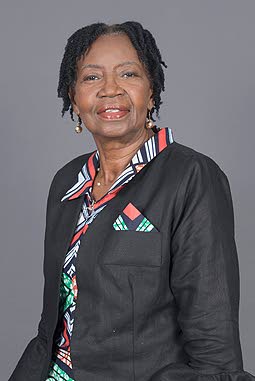Forts and rivalry in Tobago

DR RITA PEMBERTON
WHEN TOBAGO was ceded to Britain in 1763, the authorities were aware that France had not given up hope of gaining possession of the island and there was need to develop a strategy to deal with a possible French assault.
However, the authorities were anxious to keep the island in British hands and as a measure to counter the French menace, it was decided to move with alacrity to establish plantations, bring the island under cultivation and stimulate population growth. It was expected that the increased population would provide a buffer against a possible French attack and a defence force. if that became necessary.
While establishing itself in Tobago and its other new acquisitions in the Caribbean, the British administration concentrated on its older. profitable colonies and its imperial commitments around the globe. Returns from Tobago had not yet attained the expected profit levels. and in the imperial system, colonies were expected to bring benefits and not be dependent on imperial support.
The authorities therefore failed to exercise foresight in determining a defence strategy when it was common knowledge that the French were waiting for an opportune time to strike. However, it became inevitable that some action had to be taken to defend the island, which brought focus on the fort in Scarborough.
Not to be outdone, the French used the same strategy and established a fort on a hill as the centre of their defence plan when they occupied Tobago. The forts established in Scarborough and its environs during the last two decades of the 18th century reflect the tug of war between Britain and France over Tobago, and both were subject to change when possession of the island moved from one to the other.
Initially, under British rule, all administrative activity centred on Fort Granby, Barbados Bay and Georgetown, the capital of Tobago. When Scarborough was established as the capital in1769, one of the main arguments for its selection was that the Scarborough Hill provided advantages for defence which were not available in Georgetown.
The state of the barracks in Fort Granby was less than satisfactory and in order to provide better accommodation for the troops, construction of barracks at Scarborough Hill was authorised in 1771. In addition, a request was made for a plan for the defence of the island, with costs. The sum reported was considered too high, so apart from the construction of barracks by 1781, nothing significant was done. Scarborough Hill became the main centre of defence under the British, but it was poorly equipped.
The year 1781 was an ill-fated one for the British in Tobago because on June 2, the French made a surprise attack and overran the island, revealing the weakness of the defences, and forced Lieut Gov George Fergusson to surrender.
The French immediately implemented a strategy to maintain their hold. Their military centre was at Morne Cotton, also known as French Hill, Cotton Hill and later as Old Fort, from which a panoramic view to the south, east and west was possible and movements from Scarborough Hill could be monitored.
As a strategy to protect themselves from attack by sea, detachments of their troops were stationed at some of the more important bays: Great Courland Bay, Little Courland Bay, Black Rock and Fort Granby. They also kept troops in Scarborough and erected military buildings at Scarborough Hill.
The outbreak of an epidemic caused a high mortality among the troops relocated to Scarborough Hill, which was renamed Fort Castries, while Scarborough was renamed Port Louis. In 1789, in keeping with the French revolutionary stance, Fort Castries was renamed Fort Republique and Fort Liberté in 1790, by mutineers who set Port Louis on fire.
On April 14, 1793, a British force under Maj Gen Cornelius Cuyler landed at Courland Bay, where he clashed with the French and retook the island. The French fort at Morne Cotton was abandoned and Cuyler renamed Scarborough Hill Fort King George in honour of King George III. Representations were made to the secretary of state over the dilapidated state of the buildings at the fort, where, after 1793, the British garrison was stationed.
In 1795, the British administration raised a West India Regiment, which included free blacks and enslaved Africans who were conscripted from estates. The regiment served in North America and the Caribbean area and was disbanded after the Napoleonic Wars.
After 1797, greater attention was paid to defence, largely because of illness among the troops, particularly during the yellow fever epidemic which confirmed the belief that Scarborough was unhealthy, and the fear of another French attack. As a result, more construction occurred on the fort.
As expected, the French attacked and regained possession of Tobago in 1802.When the British resumed possession in 1803, the fort was renamed Fort Scarborough. Subsequently, it reverted to its previous title, Fort King George.
In 1854, much to the dismay of Tobago’s administration, the British troops were removed. The British Government, with its focus on reducing the cost of administering its Caribbean possessions, decided to concentrate its regional defence in Barbados, with a promise to keep a warship available to the islands should an emergency occur.
The fact is, there was no longer any contention over Tobago, which, with its cash-strapped sugar industry, faced severe economic decline and had lost its attraction as a colony with the potential for profit-generation.
Fort King George lost its role in external defence and its buildings were used for various purposes in the public sector. These included alleviating the cramped conditions in the prison; accommodation of the public hospital; a home for the aged and infirm; and the island’s museum.
Because of its scenic location, the fort has been cast in a completely different role as a major tourist attraction to the present day.

Comments
"Forts and rivalry in Tobago"